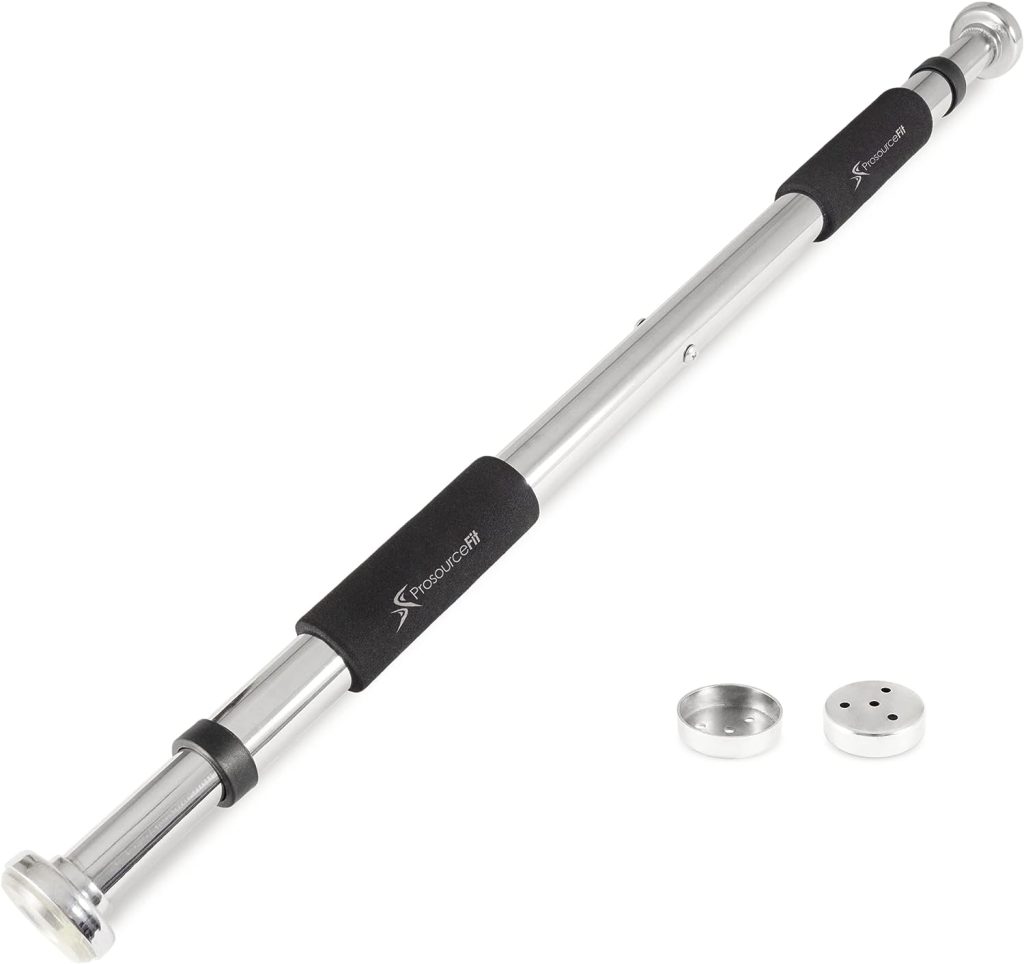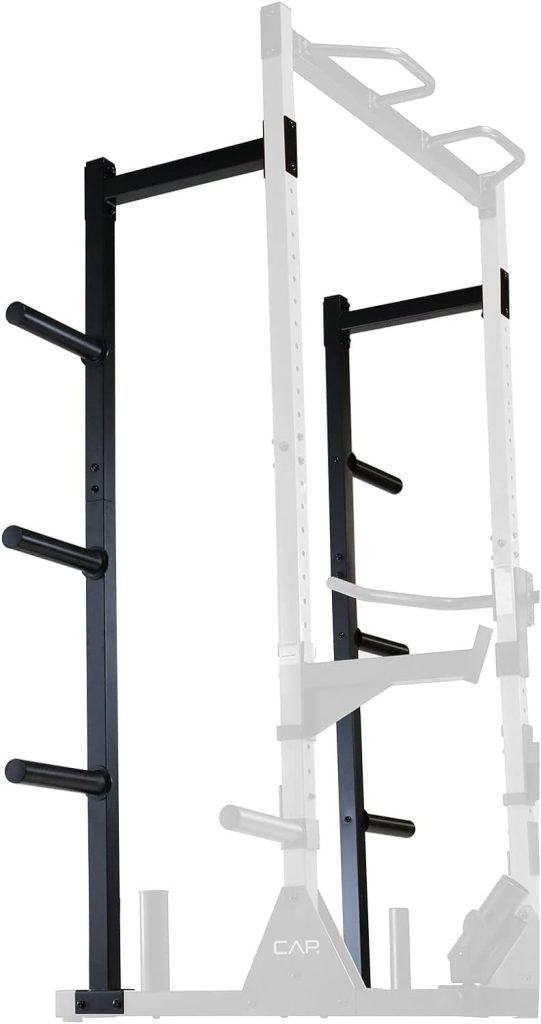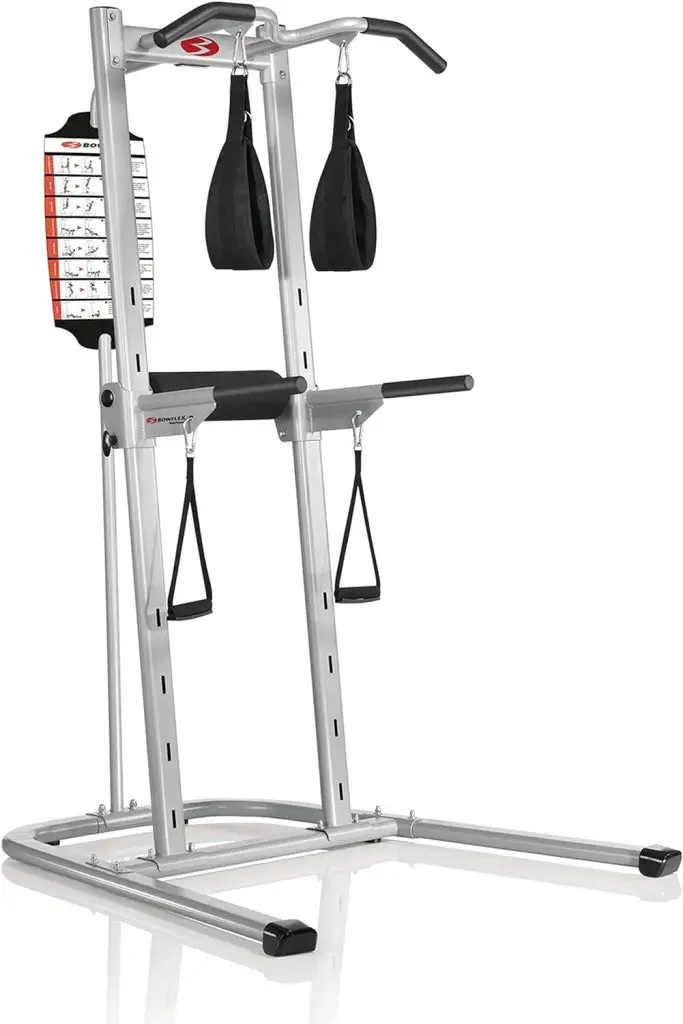Looking for the best free-standing pull-up bars to boost your workouts?
Picture this: It’s a fresh morning, and you stroll into your home gym, excited to start your day with a strong workout. As you head to your pull-up bar, you feel pumped knowing it can help you get toned arms, a strong core, and better overall health. But with so many options out there, how do you pick the right one?
Don’t worry! In this guide, we’ll explore everything about free-standing pull-up bars, from why they’re great to how to get the most out of them. Whether you’re new to fitness or a pro, we’ve got you covered.
So, grab your gear, and let’s dive into the world of pull-up bars!
Before you dive into our article on ‘Best Free-Standing Pull-Up Bars to Buy In 2024,’ check out this quick and easy DIY tutorial from Na’Jee Umbra of Umbra Visions Network. Learn how to build your own outdoor pull-up bar in less than 15 minutes! Watch now to get inspired, then explore our article for more options to enhance your fitness routine at home!
Types of Free-Standing Pull-Up Bars:
Portable Pull-Up Bars:
Portable pull-up bars are easy to carry around and set up wherever you want to work out. They’re great for outdoor workouts or when you’re traveling.

One example is the ProSource Multi-Grip Chin-Up/Pull-Up Bar, which you can attach to doorframes without any drilling. Portable pull-up bars let you do more than just pull-ups; you can also do chin-ups, leg raises, and other exercises.
Adjustable Pull-Up Bars:
Adjustable pull-up bars can be changed to fit people of different heights and fitness levels. They have different grip positions and can be adjusted to make your workouts easier or harder.

For example, the Iron Gym Total Upper Body Workout Bar can fit different door sizes and has many grip options. Adjustable pull-up bars work for anyone, whether you’re a beginner or advanced, and you can use them for lots of different exercises.
Heavy-Duty Pull-Up Bars:
Heavy-duty pull-up bars are strong and sturdy, so they won’t break when you use them for tough workouts. They’re made from tough materials like steel or aluminum and have strong mounts to keep them in place.

The CAP Barbell Power Rack Exercise Stand is an example of a heavy-duty pull-up bar that can handle heavy weights and intense workouts. These bars are good for people who do advanced exercises like weighted pull-ups or muscle-ups and need something tough to work out on.
Specialty Squat Stand Pull-Up Bars:
Specialty squat stand pull-up bars do more than just let you do pull-ups. They’re part of squat stands or power racks, so you can also do squats and other exercises.
For example, the S-3 Squat Stand 2.0 has a pull-up bar that you can adjust to different heights and grips. The Rogue S-2 Squat Stand 2.0/SML-2C Squat Stand is another option with different colors and extras you can add.
These bars are perfect for anyone who wants a compact setup for lots of different exercises in one place.


Considerations Before Purchasing:
Assess Available Space:
Before buying a free-standing pull-up bar, take a look at the space where you plan to use it. Measure the area to make sure the pull-up bar will fit comfortably without being too cramped. Consider factors like ceiling height and any obstructions that might get in the way.
For example, if you’re planning to install a pull-up bar in a doorway, make sure there’s enough clearance above the doorframe for you to perform your exercises comfortably.
Check Weight Capacity:
Safety is paramount when it comes to using a pull-up bar, so it’s crucial to check the weight capacity before making a purchase. The weight capacity refers to the maximum amount of weight the pull-up bar can support safely. Make sure to choose a pull-up bar that can accommodate your body weight plus any additional weight you may be lifting during exercises.
For example, if you weigh 200 pounds and plan to use a weight vest during workouts, make sure the pull-up bar can support at least 250 pounds to ensure safety and stability.
Easy Assembly and Installation:
Nobody wants to spend hours struggling to assemble and install a pull-up bar, so opt for a model that offers easy assembly and installation for a hassle-free setup process. Look for pull-up bars that come with clear instructions and minimal parts that can be easily put together without the need for special tools or skills.
Some pull-up bars, like the Iron Gym Total Upper Body Workout Bar, require no drilling or permanent installation and can be set up in minutes. Choosing a pull-up bar with easy assembly and installation will save you time and frustration, allowing you to focus on your workouts instead of struggling with setup.
Benefits of Free-Standing Pull-Up Bars:
Versatile for Targeting Multiple Muscle Groups and Improving Strength:
Free-standing pull-up bars offer a wide range of exercises that target various muscle groups, making them versatile tools for improving overall strength and fitness. Pull-ups primarily work the muscles in the back, arms, and shoulders, including the latissimus dorsi, biceps, and deltoids.
However, pull-up bars can also be used for chin-ups, which target the biceps and upper back, as well as leg raises, which engage the core muscles.
Additionally, variations such as wide grip, close grip, and neutral grip pull-ups allow you to target different muscle groups within the same exercise.
By incorporating free-standing pull-up bars into your workout routine, you can effectively strengthen and tone multiple muscle groups simultaneously, leading to better overall fitness and functional strength.
Convenient for Home Workouts, Eliminating the Need for Gym Memberships:
One of the greatest advantages of free-standing pull-up bars is their convenience for home workouts, eliminating the need for expensive gym memberships or trips to the gym. With a free-standing pull-up bar, you can perform a full-body workout in the comfort of your own home, saving time and money on commuting to and from the gym.
Additionally, free-standing pull-up bars are available in a variety of styles and sizes to suit different spaces and preferences, whether you have a dedicated home gym or limited space in a small apartment.
For example, the Stamina 1690 Power Tower is a compact and affordable option that provides a complete upper body workout, including pull-ups, dips, push-ups, and more.
By investing in a free-standing pull-up bar for your home, you can enjoy the convenience of anytime, anywhere workouts while achieving your fitness goals at your own pace.
Popular Free-Standing Pull-Up Bars:
Bowflex Body Tower:
The Bowflex Body Tower is a versatile and durable free-standing pull-up bar that offers a wide range of exercises for a full-body workout. With its sturdy steel frame and ergonomic design, the Body Tower provides stability and support for users of all fitness levels. It features multiple grip positions for pull-ups, chin-ups, and leg raises, allowing you to target different muscle groups effectively.

Additionally, the Body Tower includes built-in straps and handles for performing dips, push-ups, and other bodyweight exercises, making it a versatile addition to any home gym. Its compact footprint makes it suitable for smaller spaces, while its adjustable height settings accommodate users of various sizes.
Overall, the Bowflex Body Tower is a reliable and versatile option for anyone looking to build strength and improve fitness from the comfort of their own home.
Stamina 1690 Power Tower:
The Stamina 1690 Power Tower is a popular choice for individuals seeking stability and comfort during their workouts. This free-standing pull-up bar features a durable steel frame with foam-padded handles and armrests for added comfort during exercises.

The Power Tower offers multiple grip positions for pull-ups, chin-ups, and leg raises, allowing for a customizable workout experience. It also includes a padded backrest and arm supports for performing vertical knee raises and dips with proper form and support.
With its compact design and easy assembly, the Stamina 1690 Power Tower is an excellent option for home gyms with limited space. Its sturdy construction and user-friendly design make it suitable for beginners and advanced users alike, providing a safe and effective platform for achieving fitness goals.
Weider Power Tower:
The Weider Power Tower is renowned for its sturdy construction and user-friendly design, making it a popular choice among fitness enthusiasts. This free-standing pull-up bar features a heavy-duty steel frame with reinforced welds for maximum stability and durability.

It offers multiple grip positions for pull-ups, chin-ups, and leg raises, allowing users to target different muscle groups effectively.
The Power Tower also includes padded handles and armrests for added comfort during workouts, as well as a padded backrest for lumbar support during vertical knee raises and dips. With its compact footprint and easy assembly, the Weider Power Tower is a versatile option for home gyms of all sizes.
Its sturdy construction and user-friendly design make it suitable for individuals of all fitness levels, from beginners to advanced athletes, seeking a reliable platform for achieving their fitness goals.
Tips for Effective Workouts:
Maintain Proper Form and Technique:
Maintaining proper form and technique is essential when using free-standing pull-up bars to prevent injury and maximize results.
Proper form ensures that you’re targeting the intended muscles effectively and reduces the risk of strain or overuse injuries. When performing pull-ups, focus on keeping your shoulders down and back, engaging your core muscles, and avoiding swinging or kipping movements.
For chin-ups, keep your elbows close to your body and aim to bring your chest to the bar with each repetition.
Additionally, use a controlled and deliberate motion throughout the exercise, avoiding jerky movements or using momentum to cheat the movement.
If you’re unsure about proper form, consider seeking guidance from a certified personal trainer or fitness professional to ensure you’re performing exercises correctly and safely.
Progress Gradually:
Progressing gradually is key to achieving long-term success with free-standing pull-up bars. Instead of trying to do too much too soon, focus on gradually increasing the number of repetitions or trying advanced variations over time.
Start with a manageable number of repetitions and aim to increase gradually as your strength improves. You can also challenge yourself by incorporating different grip variations, such as wide grip, close grip, or neutral grip pull-ups, to target different muscle groups and keep your workouts interesting.
Additionally, consider adding weight to your pull-ups using a weight belt or weighted vest once you’ve mastered bodyweight exercises to further increase the intensity of your workouts.
By progressing gradually and challenging yourself safely, you’ll continue to see improvements in strength, endurance, and overall fitness over time.
Maintenance and Care:
Regular Cleaning:
To keep your free-standing pull-up bar in top condition, it’s essential to clean it regularly to remove dust, sweat, and debris that can accumulate over time. Use a mild detergent and water solution to wipe down the surface of the bar, handles, and any other exposed parts, ensuring thorough cleaning to remove any buildup.
For stubborn stains or residue, you can use a gentle abrasive cleaner or a mixture of baking soda and water to scrub the surface gently. Be sure to rinse the pull-up bar thoroughly with clean water and dry it with a soft cloth to prevent rust and corrosion.
Inspection and Lubrication:
In addition to regular cleaning, it’s important to inspect your free-standing pull-up bar for any signs of wear and tear, such as loose bolts, cracked welds, or damaged padding.
Check all moving parts, including hinges, joints, and adjustment mechanisms, to ensure they are functioning properly and securely. If you notice any issues, address them promptly to prevent further damage and ensure the safety and longevity of your equipment.
Additionally, lubricate moving parts as needed using a silicone-based lubricant to reduce friction and prevent squeaking or sticking. Apply the lubricant sparingly to avoid buildup and wipe away any excess with a clean cloth.
By regularly inspecting and maintaining your free-standing pull-up bar, you can prolong its lifespan and enjoy safe and effective workouts for years to come.
DIY Free-Standing Pull-Up Bar Options:
Utilize Common Household Items:
Creating a DIY free-standing pull-up bar can be a cost-effective alternative to purchasing a commercial one. Common household items like pipes, wood, or metal bars can be repurposed to construct a sturdy pull-up bar at home.
For example, you can use galvanized steel pipes as the main frame and attach them securely to a wooden base for stability.
Alternatively, you can use a sturdy wooden beam or metal bar as the pull-up bar itself and anchor it to the wall or ceiling using brackets or mounts.
By repurposing materials you already have at home, you can save money on purchasing a commercial pull-up bar while still enjoying the benefits of an effective workout station.
Ensure Stability and Safety:
When constructing a DIY free-standing pull-up bar, it’s crucial to prioritize stability and safety to prevent accidents or injuries during use.
Start by selecting materials that are strong and durable enough to support your body weight and withstand the force of your workouts. Ensure that the base of the pull-up bar is wide and sturdy enough to prevent tipping or wobbling during exercises.
Additionally, follow proper construction techniques and guidelines, such as securely anchoring the pull-up bar to the ground or wall and using strong fasteners and reinforcements to hold the structure together.
Consider consulting with a knowledgeable handyman or contractor for guidance on proper construction techniques and ensuring the structural integrity of your DIY pull-up bar.
By taking the necessary precautions and ensuring stability and safety, you can create a reliable and effective DIY free-standing pull-up bar for your home gym.
Conclusion:
In summary, free-standing pull-up bars provide a practical and efficient means to enhance upper body strength and overall fitness from the comfort of your home.
By selecting the appropriate type and considering essential factors before purchasing, such as space, weight capacity, and ease of assembly, you can ensure a rewarding and effective workout experience.
Moreover, following tips for maintaining proper form, progressing gradually, and caring for your equipment can further optimize your results and ensure longevity. With the versatility and convenience offered by free-standing pull-up bars, there’s no better time to incorporate pull-up exercises into your fitness routine.
Take action today and start on a journey to a stronger, healthier you!


